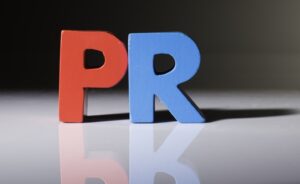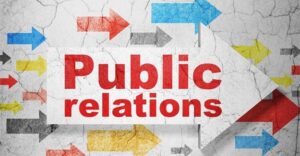In recent years, sustainability has evolved from a niche concern to a central tenet of business strategy, and the role of public relations (PR) in this shift cannot be overstated. As consumers grow more environmentally conscious and socially aware, they are increasingly holding companies accountable for their impact on the planet and society. In this new era, Sustainability PR has become essential—not only to shape a brand’s image but also to drive genuine change in corporate practices.
But sustainability in PR isn’t just about pushing out feel-good messaging and promoting a company’s green credentials. It’s about authenticity, transparency, and a commitment to aligning business practices with the environmental and social values consumers increasingly prioritize. Greenwashing—the practice of making misleading claims about a brand’s environmental efforts—is no longer acceptable, and brands that fail to demonstrate tangible commitment to sustainability will quickly face consumer backlash.
In this op-ed, we’ll examine how leading brands such as Patagonia, IKEA, and Unilever have successfully leveraged sustainability-focused PR strategies to not only enhance their brand image but also to drive genuine social and environmental impact. By analyzing their approaches, we’ll uncover the key components of effective sustainability PR in 2025, which can serve as a guide for other brands looking to communicate their environmental commitments responsibly and authentically.
I. Patagonia: The Gold Standard for Authentic Sustainability PR
Patagonia has long been regarded as the gold standard for sustainability PR. The company has effectively combined its environmental advocacy with its business operations, creating a reputation for being both innovative and ethical. As the company approaches its 50th anniversary, Patagonia’s strategy demonstrates that authenticity is paramount in sustainability PR. It isn’t just about reducing the carbon footprint or switching to eco-friendly packaging—it’s about embedding sustainability into every part of the brand’s DNA.
A. “Don’t Buy This Jacket”: Radical Transparency
One of the most iconic sustainability campaigns in PR history was Patagonia’s “Don’t Buy This Jacket” campaign, launched on Black Friday 2011. In the ad, Patagonia directly challenged its customers to consider whether they really needed a new jacket, highlighting the environmental impact of overconsumption. While this may seem counterintuitive for a retail brand, it was an incredibly effective strategy for building consumer trust and aligning Patagonia’s message with its actions.
Patagonia’s commitment to reduce, reuse, and repair is reflected in its Worn Wear initiative, which encourages customers to buy used gear or repair old items instead of purchasing new ones. This initiative goes far beyond marketing—it is a deeply embedded aspect of the brand’s sustainability ethos. By showing consumers that sustainability is not just about purchasing eco-friendly products but also about rethinking consumption, Patagonia created an enduring reputation for radical honesty and transparency in its PR.
B. Activism as PR Strategy
Patagonia also takes a bold stance on environmental issues, using its PR platforms to advocate for environmental justice. The company has often made headlines by taking direct action to protect natural spaces, such as suing the U.S. government over public land policies or donating significant portions of its profits to environmental organizations. These actions aren’t mere publicity stunts—they’re rooted in a genuine commitment to environmental advocacy.
For example, Patagonia’s PR around its “1% for the Planet” initiative, where it donates 1% of sales to environmental causes, has made a significant impact on the company’s public image. By intertwining its activism with its products, Patagonia has shown that it’s not just interested in making money—it’s invested in making the world a better place.
C. Sustainability Reporting and Accountability
Patagonia’s approach to sustainability reporting is another key element of its PR strategy. The company has been transparent about its supply chain, the materials it uses, and its environmental impact. Patagonia publishes annual Environmental & Social Responsibility Reports that offer insight into its efforts to reduce its carbon footprint, improve labor conditions, and source materials ethically.
This level of transparency not only builds trust with Patagonia’s core audience but also sets a standard for other brands in the industry. It shows that effective sustainability PR goes beyond messaging and involves detailed reporting and accountability for the brand’s environmental and social impact.
II. IKEA: Sustainability PR Through Innovation and Product Evolution
IKEA, the Swedish multinational home goods retailer, is another brand that has leveraged sustainability PR effectively. Known for its affordability and stylish designs, IKEA is also committed to reducing its environmental impact, creating an extensive suite of initiatives designed to promote sustainability at every stage of its product lifecycle. The company’s focus on circular economy principles—where products are reused, repaired, or recycled rather than thrown away—has become a central theme of its digital and traditional PR campaigns.
A. Circular Economy as Core Brand Messaging
In 2023, IKEA launched a new sustainability-focused PR campaign around its ambitious goal to become a fully circular business by 2030. This included highlighting the IKEA Circular Hub, a service where customers can trade in their used furniture or buy second-hand items. IKEA has also committed to transitioning to 100% sustainable sourcing for its materials, such as wood, cotton, and plastic.
IKEA’s approach to sustainability is holistic, focused on reducing waste and creating long-term value. Through its PR campaigns, IKEA showcases innovative product lines like modular furniture, designed to be more easily disassembled and reused. Additionally, the company highlights its transition to sustainable materials and partnerships with organizations focused on reforestation and renewable energy.
B. Collaborations and Partnerships for Greater Impact
IKEA’s PR strategy includes a focus on collaboration with external partners. The brand has partnered with major environmental organizations like World Wildlife Fund (WWF) to co-create solutions for a more sustainable future. These partnerships amplify IKEA’s message and signal to consumers that the company is committed to working with trusted, credible organizations to meet its sustainability goals.
Another standout initiative is IKEA’s partnership with Tomra, a company that specializes in reverse vending machines for recycling. By integrating these machines into its stores, IKEA not only provides a convenient way for customers to return used products but also underscores its commitment to reducing waste and creating a circular economy.
C. Transparent Sustainability Reporting
IKEA’s sustainability PR is anchored in transparency. Through its annual Sustainability Report, IKEA shares updates on its progress toward its goals, from the use of renewable materials to reducing its carbon emissions. This clear, data-driven reporting demonstrates to consumers that the brand is not just paying lip service to sustainability but is actively working toward its ambitious targets.
This level of transparency creates trust—particularly when brands are open about their challenges and setbacks. In a world where sustainability claims are often met with skepticism, IKEA’s willingness to show its progress (and its obstacles) reinforces the credibility of its PR message.
III. Unilever: Driving Systemic Change with Sustainability PR
Unilever, the British-Dutch multinational consumer goods company, has positioned itself as a leader in the realm of sustainability PR. Over the past decade, Unilever has integrated sustainability into nearly every aspect of its operations, from product development to supply chain management. The brand’s commitment to sustainable living and its focus on social impact have made it a model for other corporations looking to leverage sustainability PR effectively.
A. Unilever’s Sustainable Living Plan
Launched in 2010, Unilever’s Sustainable Living Plan set ambitious targets for reducing the company’s environmental footprint and improving the livelihoods of millions of people worldwide. From reducing water usage in products to making its packaging more sustainable, Unilever’s strategy has focused on holistic sustainability. Through its PR campaigns, Unilever has communicated its progress toward meeting these goals, reinforcing its reputation as an ethical, sustainable brand.
What sets Unilever apart in the sustainability PR space is its ability to connect its sustainability goals with consumer brands. With over 400 brands in its portfolio, including Dove, Ben & Jerry’s, and Hellmann’s, Unilever leverages the power of its brand portfolio to promote social causes, gender equality, and climate action.
B. Purpose-Driven Campaigns for Social Impact
Unilever’s Dove Real Beauty Campaign is an example of how sustainability PR can also drive social change. The campaign, which promotes body positivity and self-esteem, aligns with Dove’s core mission of creating a positive social impact through its products. Dove’s commitment to inclusive beauty is amplified by its sustainability initiatives, such as using 100% recycled plastic packaging.
Through campaigns like this, Unilever has successfully positioned itself as a brand that not only cares about the environment but also champions broader societal change. These campaigns often blend sustainability with a message of empowerment, social justice, and human rights, which resonates with younger, values-driven consumers.
C. The Role of Data and Metrics in Sustainability PR
Unilever’s success in sustainability PR is due, in part, to its heavy reliance on data and metrics. The company measures the environmental impact of its brands and shares this data publicly. This approach helps build credibility, showing that its claims are backed by tangible evidence.
Unilever also tracks consumer sentiment and social impact through surveys and partnerships with external auditors. By communicating these results through its PR channels, Unilever demonstrates accountability—a crucial element in effective sustainability communication.
IV. Conclusion: Authenticity and Transparency Will Define the Future of Sustainability PR
As we move into 2025, brands that wish to succeed in the sustainability space must go beyond superficial greenwashing or marketing gimmicks. Authenticity, transparency, and genuine commitment to environmental and social change are the cornerstones of successful sustainability PR.
Patagonia, IKEA, and Unilever have all set exemplary standards in this regard, demonstrating that it is possible to integrate sustainability into every aspect of a company’s operations and communicate these efforts effectively. By focusing on real actions, radical transparency, and purpose-driven messaging, these companies have shown that sustainability PR isn’t just about crafting the right narrative—it’s about living the narrative every day.
As more consumers demand accountability from the brands they support, businesses that fail to meet these expectations will quickly find themselves exposed. For companies looking to lead in the sustainability PR space, the key lies in authenticity, accountability, and a commitment to making a measurable impact on both the planet and society. The brands that master these principles will be the ones to thrive in the coming years.




